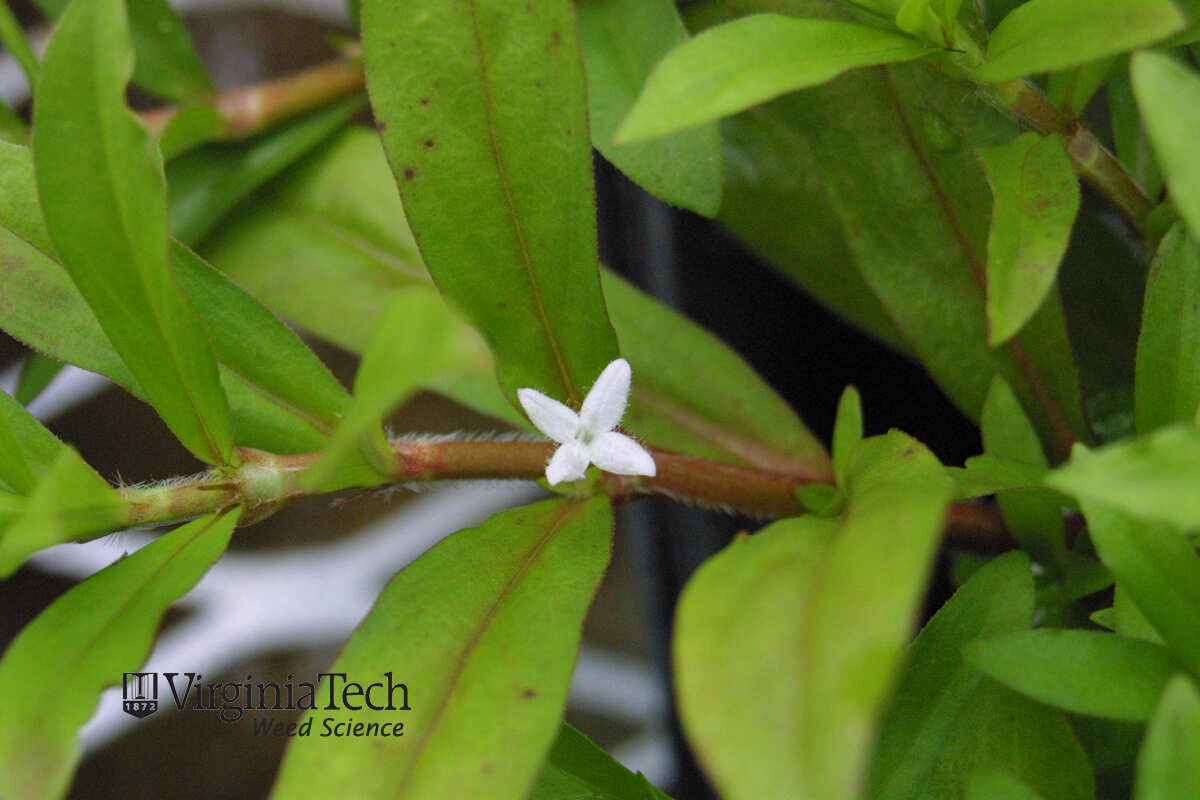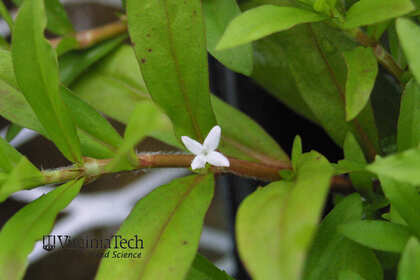Virginia buttonweed
Family
RubiaceaeScientific Name
Diodia virginianaOther Common Names:
larger buttonweed
Synonyms (former Scientific Names):
Diodia tetragona
Diodia hirsuta
Habit
This spreading perennial is often found growing in mats, flowers from June through November.
Leaves
The simple, opposite leaves are lance shaped, and grow from 1 1/4 to 2 1/2 inches long (3-6 cm), and up to 1 inch wide (4-12 mm). The leaves are joined across the stem by rough hairy stipules. By late summer, the leaves are often mottle yellow by virus. The stems are occasionally hairy, and take root at the nodes.
Identifying Characteristics
This plant can be identified by its semi-erect growing habits, its narrow hairless leaves, slightly angular stems with sparse hair, and by the 4 petaled flowers that are usually white but can also be pink. It closely resembles poorjoe, Diodia teres.
Flower Seed Head
The solitary or paired flowers arise from the leaf axils. Each white flower has 4 petals that are arranged to form a star-like shape.
Seed Fruit
The seeds develop in a top-shaped, hairy nut, 5 to 9 mm long. Each nut will split open at maturity, releasing 2 seeds.
Where Found
This plant prefers dry, semi-shady areas. It can be found growing along the edges of forests, pastures, and turf.
Growth Habit
prostrate and nonwoody
Thorns or Spines
not present
Approximate Flower Diameter
Varies:
pencil,
dime
Dominant Flower Color
Varies:
white,
yellow
Flower Symmetry
radial symmetery
Leaf Hairs
no hairs
Leaf Shape
lance
Leaf Arrangement
opposite
Leaf Margin
entire
Leaf Structure
simple
Leaf Stalk
none
Stem Hairs
has hairs
Stem Cross Section
square or multi-edged
Milky Sap
not present
Root Structure
fibrous
Life Cycle
perennial
Ochrea
not present
Plant Type
Herb











